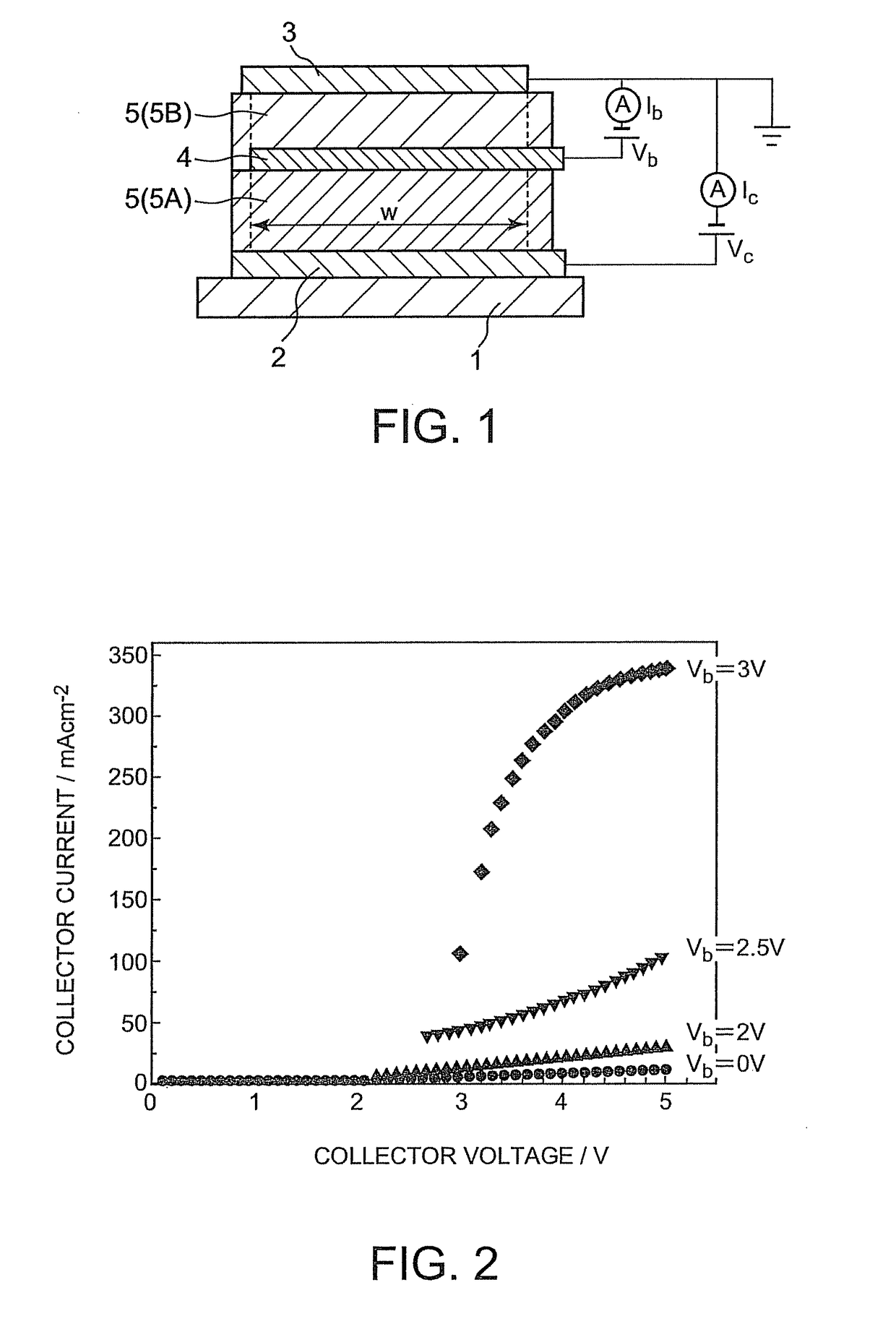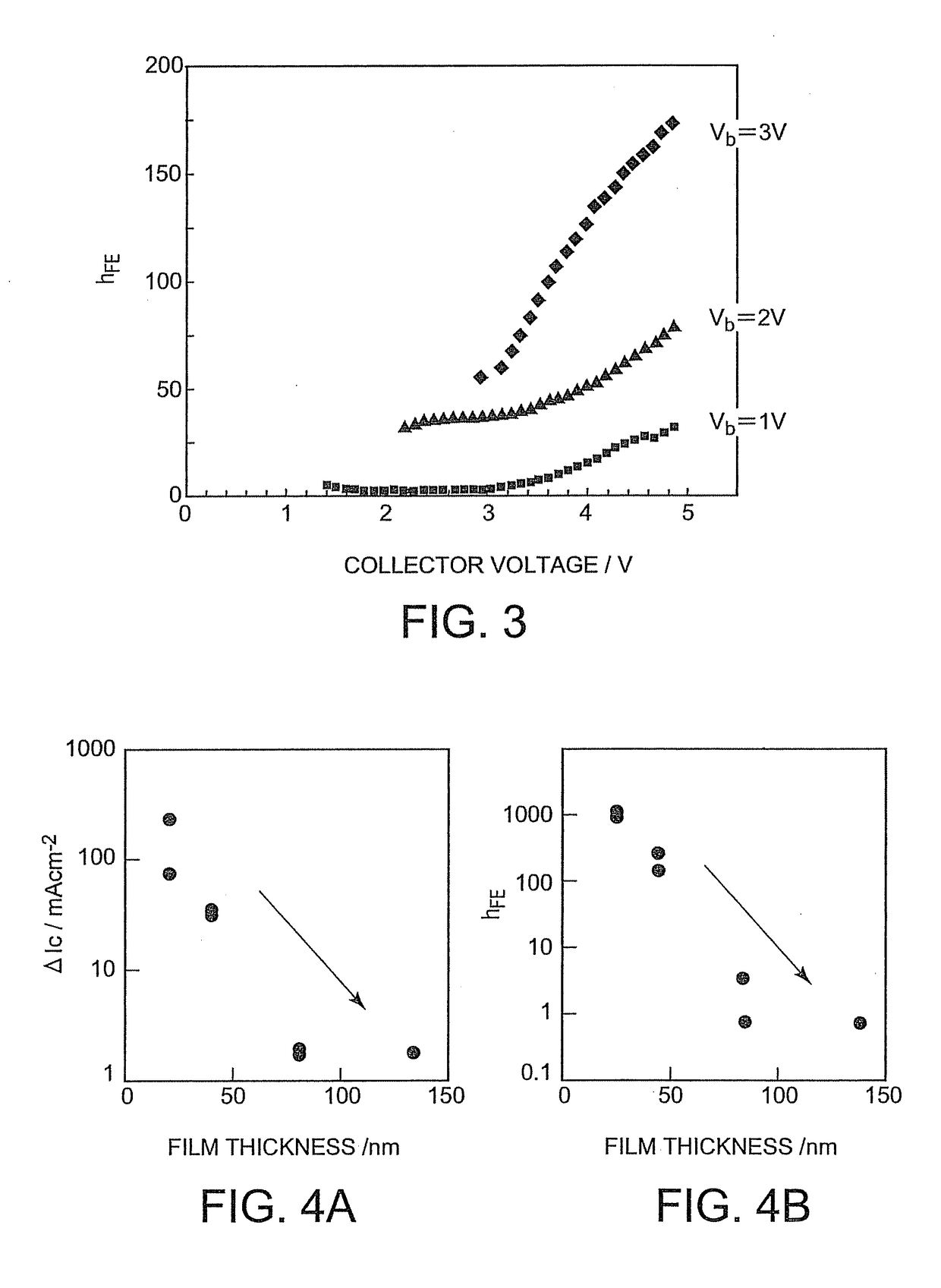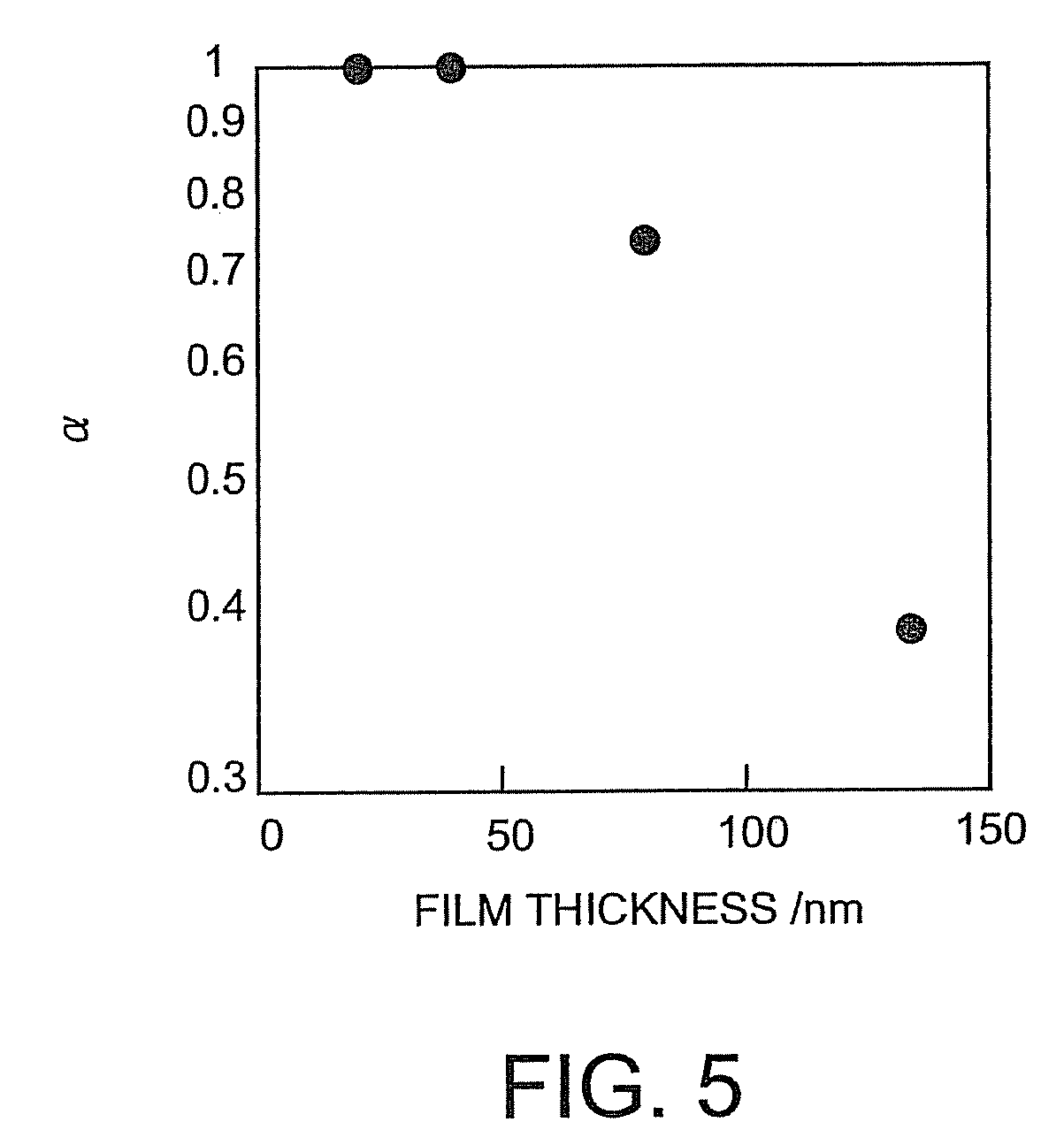Transistor and process of producing the same, light-emitting device, and display
a technology of light-emitting devices and transistors, applied in the direction of discharge tubes/lamp details, nanoinformatics, discharge tubes/lamp details, etc., can solve the problems of not always providing the above transistor action of metal/semiconductor layered structures, difficult to reduce the channel length to below several micrometers, etc., to achieve simple structure, increase the on/off ratio, and increase the current modulation
- Summary
- Abstract
- Description
- Claims
- Application Information
AI Technical Summary
Benefits of technology
Problems solved by technology
Method used
Image
Examples
Embodiment Construction
[0085]A transistor, a process of producing it, a light-emitting device and a display according to the present invention will be described hereinafter in the order of a first transistor, a second transistor, a process of producing the second transistor, a light-emitting device, and a display. The present invention is not limited to the following embodiments and is susceptible to modification without departing from the spirit of this disclosure and the scope of the appended claims.
[0086](First Transistor)
[0087]FIG. 1 is a schematic cross-sectional view of a first transistor of the present invention. A first transistor 10 of the invention comprises an emitter electrode 3, a collector electrode 2, and a semiconductor layer 5 (5A, 5B) and a sheet base electrode 4 between the emitter electrode 3 and the collector electrode 2, as shown in FIG. 1. Specifically, the semiconductor layer 5 is composed of a first semiconductor layer 5A situated between the collector electrode 2 and the base ele...
PUM
| Property | Measurement | Unit |
|---|---|---|
| thickness | aaaaa | aaaaa |
| length | aaaaa | aaaaa |
| thickness | aaaaa | aaaaa |
Abstract
Description
Claims
Application Information
 Login to View More
Login to View More - R&D
- Intellectual Property
- Life Sciences
- Materials
- Tech Scout
- Unparalleled Data Quality
- Higher Quality Content
- 60% Fewer Hallucinations
Browse by: Latest US Patents, China's latest patents, Technical Efficacy Thesaurus, Application Domain, Technology Topic, Popular Technical Reports.
© 2025 PatSnap. All rights reserved.Legal|Privacy policy|Modern Slavery Act Transparency Statement|Sitemap|About US| Contact US: help@patsnap.com



